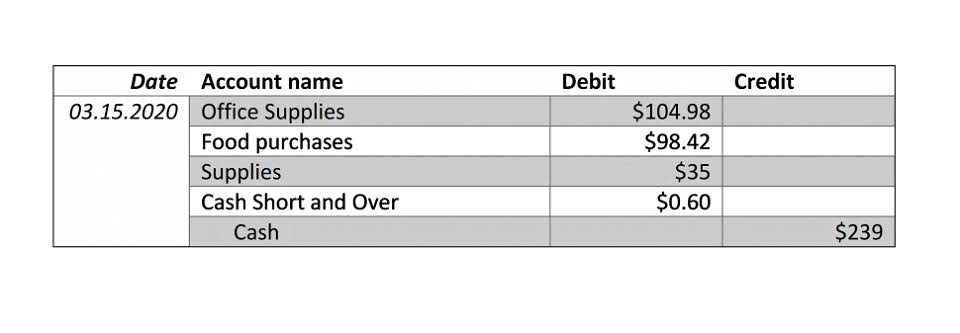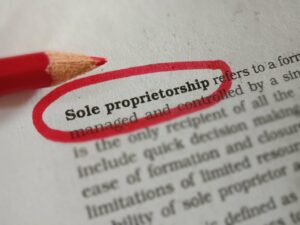
Therefore, the Cash account is increased with a debit entry of $2,000; and the Accounts Receivable account is decreased with a credit entry of $2,000. It should be noted that if an account is normally a debit balance it is increased adjusting entries by a debit entry, and if an account is normally a credit balance it is increased by a credit entry. So for example a debit entry to an asset account will increase the asset balance, and a credit entry to a liability account will increase the liability. Some of the accounts have a normal credit balance, while others have a normal debit balance. For example, common stock and retained earnings have normal credit balances. The dividend account has a normal debit balance; when the company pays dividends, it debits this account, which reduces shareholders’ equity.

Using the Normal Balance

Liabilities, revenues and sales, gains, and owner equity and stockholders’ equity accounts normally have credit balances. The double-entry system requires that the general ledger account balances have the total of the debit balances equal to the total of the credit balances. This occurs because every transaction must have the debit amounts equal to the credit amounts.
- The balance of an account increases on the same side as the normal balance side.
- Therefore, the Cash account is increased with a debit entry of $2,000; and the Accounts Receivable account is decreased with a credit entry of $2,000.
- This occurs because every transaction must have the debit amounts equal to the credit amounts.
- For reference, the chart below sets out the type, side of the accounting equation (AE), and the normal balance of some typical accounts found within a small business bookkeeping system.
- These accounts normally have credit balances that are increased with a credit entry.
- He has been a manager and an auditor with Deloitte, a big 4 accountancy firm, and holds a degree from Loughborough University.
Which accounts normally have debit balances?

For the past 52 years, Harold Averkamp (CPA, MBA) has worked as an accounting supervisor, manager, consultant, university instructor, and innovator in teaching accounting online. Double Entry Bookkeeping is here to provide you with free online information to help you learn and understand bookkeeping and introductory accounting. Chartered accountant Michael Brown is the founder and CEO of Double Entry Bookkeeping. He has worked as an accountant and consultant for more than 25 which set of accounts below would have a normal debit balance? years and has built financial models for all types of industries.
Bookkeeping
Although each account has a normal balance in practice it is possible for any account to have either a debit or a credit balance depending on the bookkeeping entries made. In accounting, a debit balance refers to a general ledger account balance that is on the left side of the account. This is often illustrated by showing the amount on the left side of a T-account. For the past 52 years, Harold Averkamp (CPA, MBA) hasworked as an accounting supervisor, manager, consultant, university instructor, and innovator in teaching accounting online.
- This is often illustrated by showing the amount on the left side of a T-account.
- The dividend account has a normal debit balance; when the company pays dividends, it debits this account, which reduces shareholders’ equity.
- Each of the accounts in a trial balance extracted from the bookkeeping ledgers will either show a debit or a credit balance.
- Accounts Receivable is an asset account and is increased with a debit; Service Revenues is increased with a credit.
When an account has a balance that is opposite the expected normal balance of that account, the account is said to have an abnormal balance. For example, if an asset account which is expected to have a debit balance, shows a credit balance, then this is considered to be an abnormal balance. From the table above it can be seen that assets, expenses, and dividends normally have a debit balance, whereas liabilities, capital, and revenue normally have a credit balance.
Advance Your Accounting and Bookkeeping Career
He has been the CFO or controller of both small and medium sized companies and has run small businesses of his own. He has been a manager and an auditor with Deloitte, a big 4 accountancy firm, and holds a degree from Loughborough University. Debit simply means on the left side of the equation, whereas credit means on the right hand side of the equation as summarized in the table below.
Is salary expense a debit or credit?

Asset accounts normally have debit balances, while liabilities and capital normally have credit balances. On the other hand, expenses and withdrawals decrease capital, hence they normally have debit balances. Assets, expenses, losses, and the owner’s drawing account will normally have debit balances. Their balances will increase with a debit entry, and will decrease with a credit entry.
Cash Flow Statement
So for example there are contra expense accounts such as purchase returns, contra revenue accounts such as sales returns and contra asset accounts such as accumulated depreciation. Accounts Receivable is an asset account and is increased with a debit; Service Revenues is increased with a credit. A debit increases the balance in an expense account; a credit decreases the balance. For reference, the chart below sets out the type, side of the accounting equation (AE), and the normal balance of some typical accounts found within a small business bookkeeping system.
These accounts normally have credit balances that are increased with a credit entry. The exceptions to this rule are the accounts Sales Returns, Sales Allowances, and Sales Discounts —these accounts have debit balances because they are reductions to sales. The balance of an account increases on the same side as the normal balance side. Each of the accounts in a trial balance extracted from the bookkeeping ledgers will either show a debit or a credit balance. The normal Accounting For Architects balance of any account is the balance (debit or credit) which you would expect the account have, and is governed by the accounting equation.





